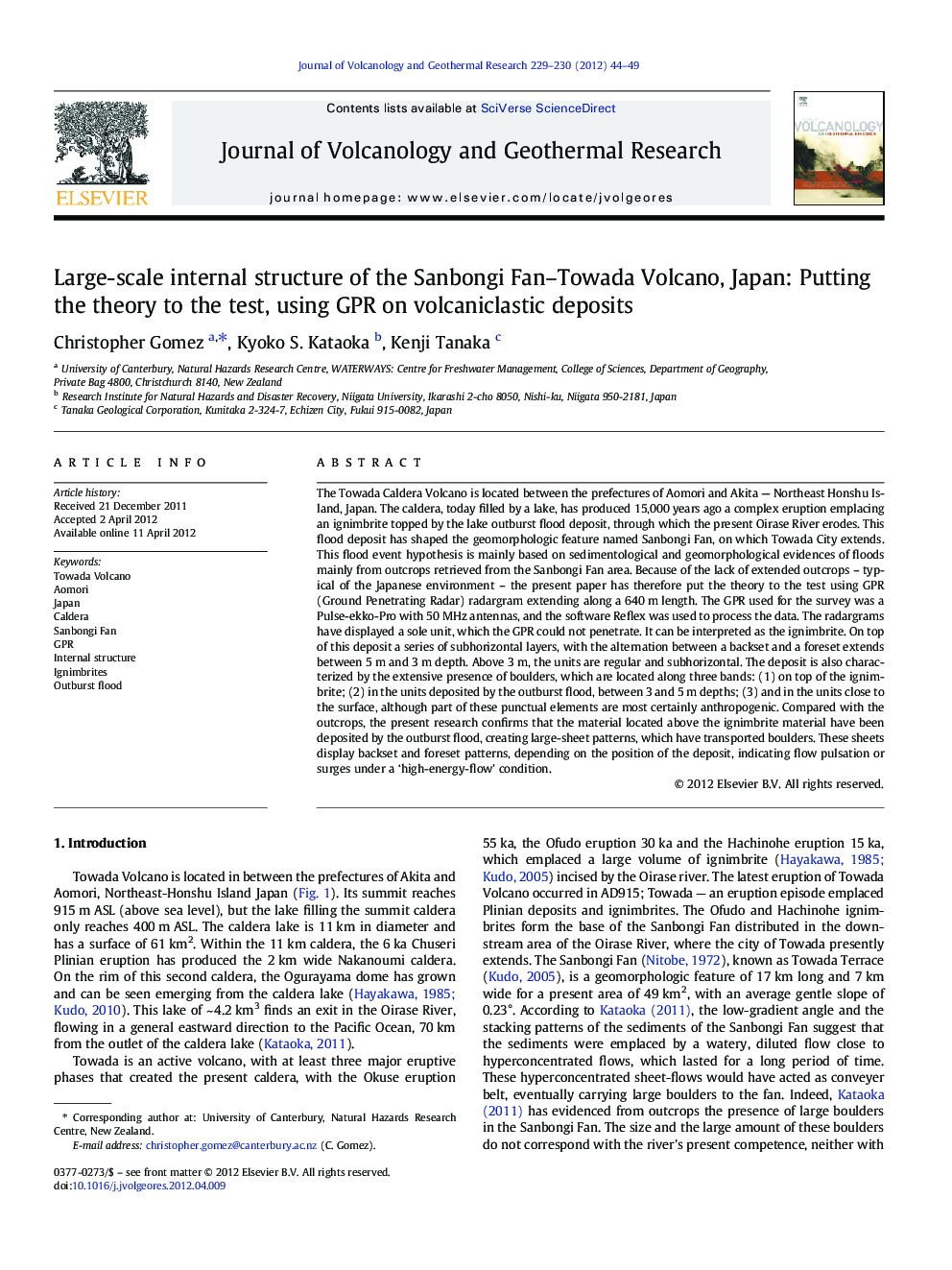| کد مقاله | کد نشریه | سال انتشار | مقاله انگلیسی | نسخه تمام متن |
|---|---|---|---|---|
| 4713612 | 1638382 | 2012 | 6 صفحه PDF | دانلود رایگان |

The Towada Caldera Volcano is located between the prefectures of Aomori and Akita — Northeast Honshu Island, Japan. The caldera, today filled by a lake, has produced 15,000 years ago a complex eruption emplacing an ignimbrite topped by the lake outburst flood deposit, through which the present Oirase River erodes. This flood deposit has shaped the geomorphologic feature named Sanbongi Fan, on which Towada City extends. This flood event hypothesis is mainly based on sedimentological and geomorphological evidences of floods mainly from outcrops retrieved from the Sanbongi Fan area. Because of the lack of extended outcrops – typical of the Japanese environment – the present paper has therefore put the theory to the test using GPR (Ground Penetrating Radar) radargram extending along a 640 m length. The GPR used for the survey was a Pulse-ekko-Pro with 50 MHz antennas, and the software Reflex was used to process the data. The radargrams have displayed a sole unit, which the GPR could not penetrate. It can be interpreted as the ignimbrite. On top of this deposit a series of subhorizontal layers, with the alternation between a backset and a foreset extends between 5 m and 3 m depth. Above 3 m, the units are regular and subhorizontal. The deposit is also characterized by the extensive presence of boulders, which are located along three bands: (1) on top of the ignimbrite; (2) in the units deposited by the outburst flood, between 3 and 5 m depths; (3) and in the units close to the surface, although part of these punctual elements are most certainly anthropogenic. Compared with the outcrops, the present research confirms that the material located above the ignimbrite material have been deposited by the outburst flood, creating large-sheet patterns, which have transported boulders. These sheets display backset and foreset patterns, depending on the position of the deposit, indicating flow pulsation or surges under a ‘high-energy-flow’ condition.
► First GPR survey on volcanic deposit on a Japanese volcano.
► GPR detection of structures too vast to be studied from outcrops.
► Unveiling of internal complexities invisible from outcrops.
► Confirmation of Kataoka (2011) eruptive theory.
Journal: Journal of Volcanology and Geothermal Research - Volumes 229–230, 1 June 2012, Pages 44–49